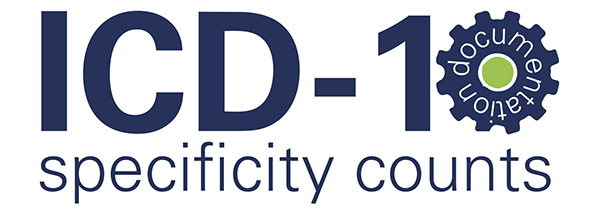The biggest little change in health care is almost here – ICD-10.
After almost 40 years of using ICD-9, the health care industry in the United States will transition to an ICD-10 code set effective Oct. 1, 2015. That is only a couple of weeks away.
The U.S. Department of Health and Human Services has mandated that all health care providers, payers and clearing houses comply with the ICD-10 code sets, which give a more accurate description of current medical practices than outdated ICD-9 codes. Outpatient procedure codes will remain the same.
“ICD-10 offers us an opportunity to document and code with more specificity. Detailed documentation leads to a more thorough patient history, improved quality reporting and reimbursement that accurately reflects the patient care we have provided,” Loma Linda University Medical Center CEO Kerry L. Heinrich, JD, says in an ICD-10 introduction video.
The “ICD-10 Why?” video was produced at Loma Linda University Health as part of a comprehensive training program for thousands of staff members. However, it is also available for all employees to view on the ICD-10 webpage on VIP.
While ICD-10 will affect staff in different ways, everyone at Loma Linda University Health is responsible for providing quality health care.
ICD-10 is a standard diagnostic tool for all health management purposes. It converts a patient’s diagnosis into a coded global language. In the United States, ICD (International Classification of Diseases) is also used to connect health care data to reimbursement. Since ICD-9 was introduced in the U.S., patient diagnoses and treatment have become much more complex.
“With ICD-10, physicians will be able to document and code in a way that provides a more complete picture of their patient’s condition,” says Ricardo Peverini, MD, president of Loma Linda University Faculty Medical Group. “By including the key aspects of the patient’s disease, injury and progression, we are better able to coordinate that patient’s care across different providers and over time.”
Besides reflecting current medical practices, ICD-10 gives health care providers, researchers and population health professionals a better way to track diseases.
“The goal is to improve health outcomes here at Loma Linda and across the nation,” says Francis Chan, MD, medical informatics liaison officer at Loma Linda University Health.
The increased specificity of ICD-10 does mean the code set has expanded. The structural changes of ICD-10 dramatically increase the code volume, from about 18,000 codes in ICD-9 to more than 140,000 procedure and diagnosis codes in ICD-10. More than one-third of the expansion of ICD-10 codes is due to the addition of laterality.
Clinicians will need to document the necessary information to support the expanded coding. This should occur naturally, during the physicians’ discovery process in speaking with their patients. Then, they will simply document what they are told. This will help clarify how sick a patient is and also support the clinician’s treatment.
Because this transition impacts every physician, department or staff member who assigns, receives, analyzes or uses ICD-9 codes, Loma Linda University Health has developed a comprehensive training program. Teams were assembled to address the impact across the health system. A cross-functional group of individuals has developed physician and non-physician specific training, which is going on now throughout Loma Linda University Heath.
“We believe that the preparations and provisions of resources will ensure our readiness because specificity does count when it comes to capturing quality documentation,” says Brenda Taylor, executive director of health information management for Loma Linda University Health.
Selected learners have received emails regarding training courses based on their specific professions. Besides the electronic courses, other tools to help with the ICD-10 transition have been developed. They include more than 200documentation specificity guides for physicians, LLEAP physician tip sheets, dual coding practice and EMR diagnosis links.
Those resource materials, along with the ICD-10 introduction video, can be accessed on VIP.
Specificity counts. Let’s be ready.
For more information on ICD-10, visit the ICD-10 VIP page.

